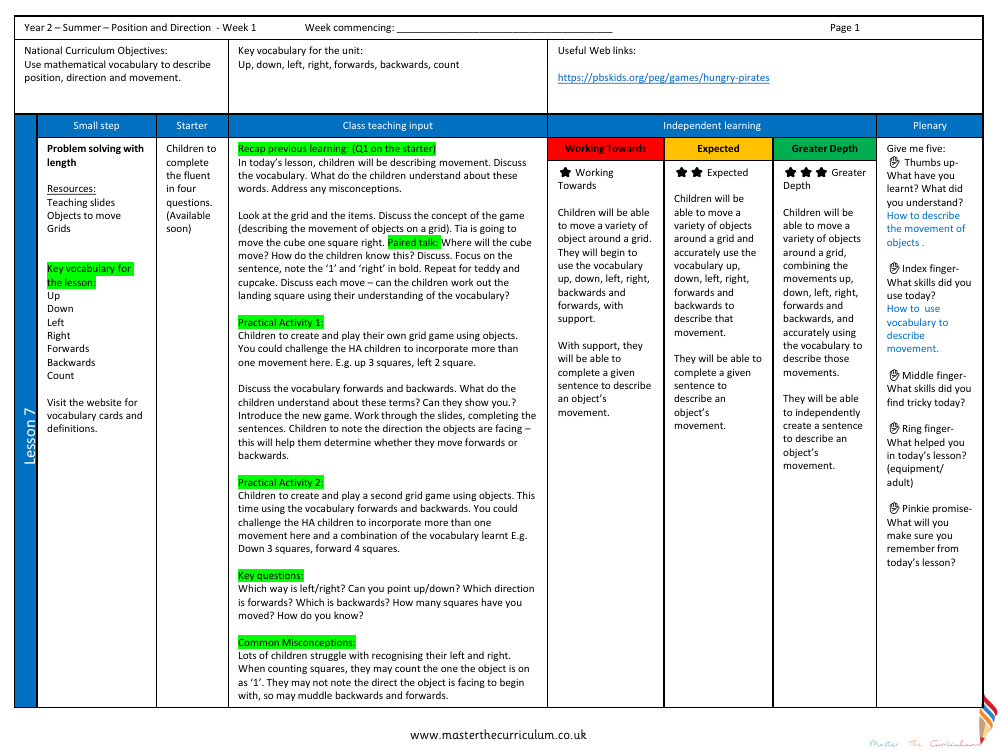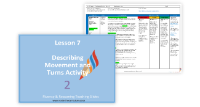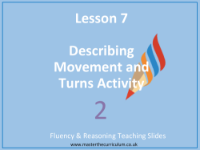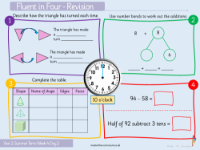Position and direction - Describe movement and turns activity - Planning

Maths Resource Description
In the Year 2 summer term, students embark on a week dedicated to understanding position and direction. The National Curriculum objectives for this period aim to enhance their ability to use mathematical vocabulary to describe position, direction, and movement. Key terms such as 'up', 'down', 'left', 'right', 'forwards', 'backwards', and 'count' are central to this unit. The lesson begins with a starter activity that recaps prior learning and addresses any misconceptions about these terms. Students then engage with a grid and items, discussing and predicting movements of objects such as a cube, teddy, and cupcake. The focus is on understanding and using the vocabulary to determine the final position of the objects after they have moved.
During the lesson, children participate in practical activities that involve creating and playing their own grid games. They manipulate objects on the grid and describe their movements using the key vocabulary. The lesson is designed to cater to different levels of ability, with more challenging tasks for higher-achieving (HA) students, such as incorporating multiple movements and combining different directional terms. The lesson concludes with reflection on what the children have learned, the skills they have used, and a reinforcement of the importance of directionality. The activities aim to help students overcome common misconceptions, such as confusing left and right or miscounting squares. The progression of learning outcomes is structured from 'Working Towards' to 'Expected' and then to 'Greater Depth', with each stage building upon the children's ability to move objects on a grid and describe their movements using the correct mathematical language.


